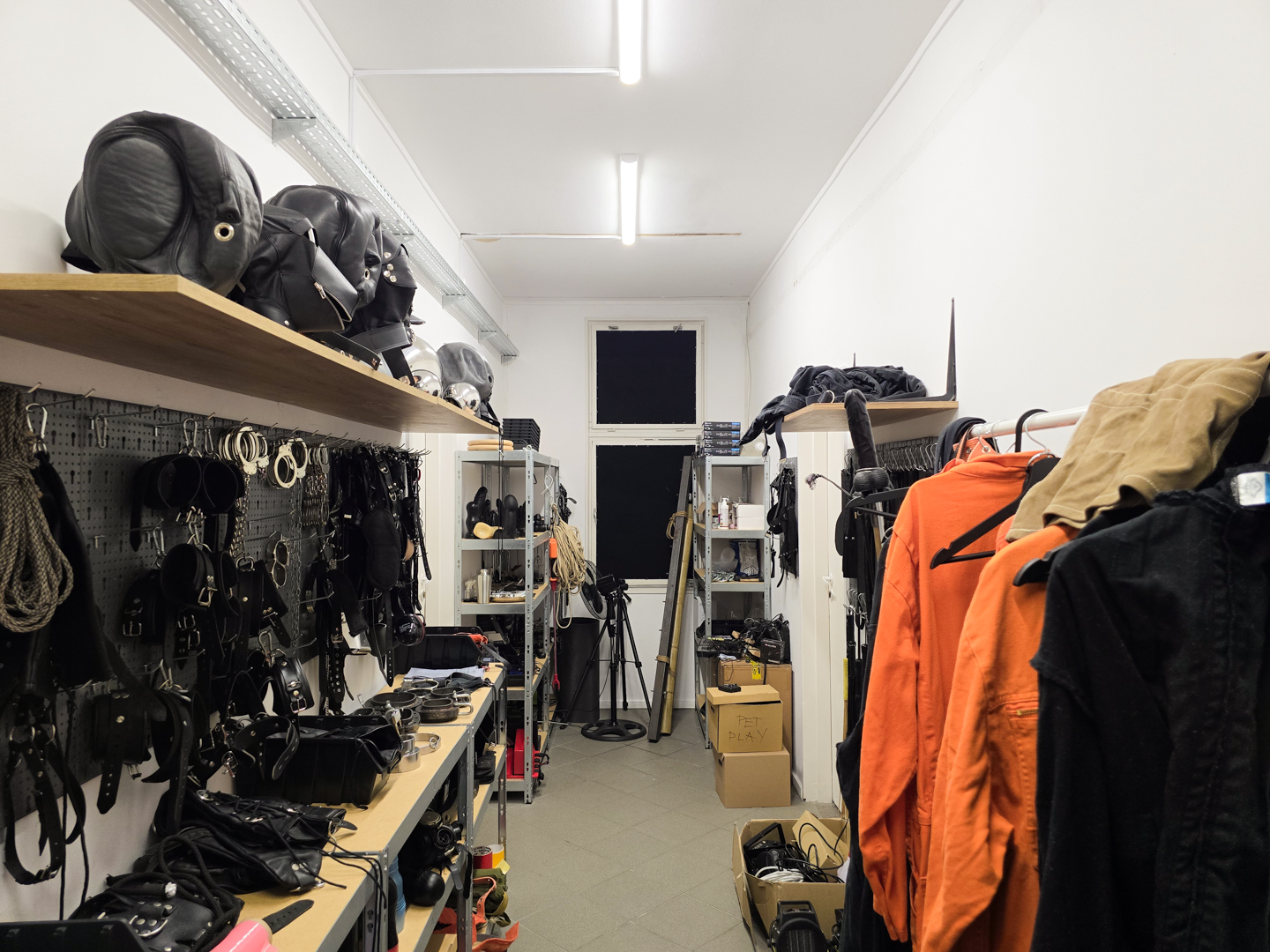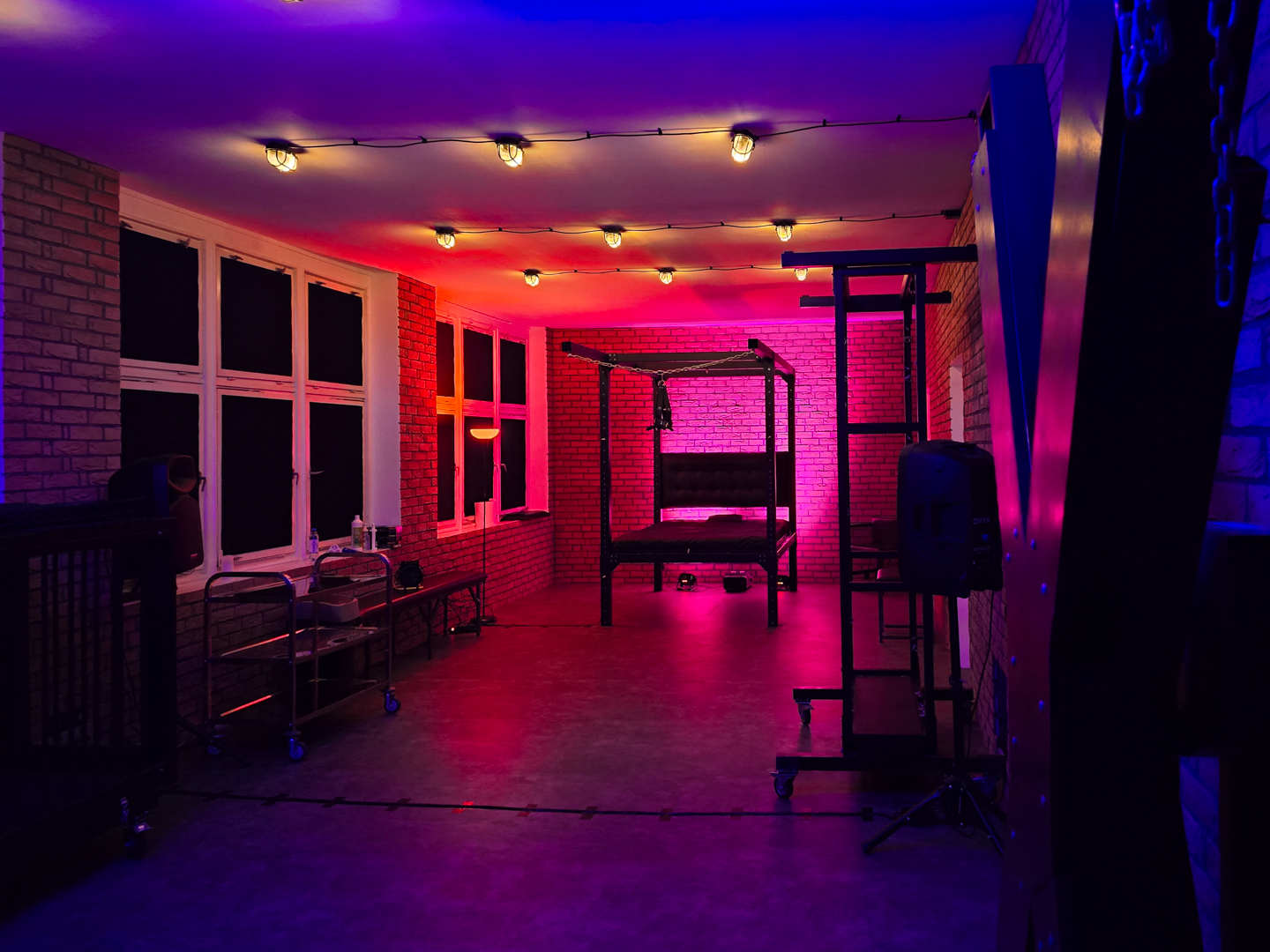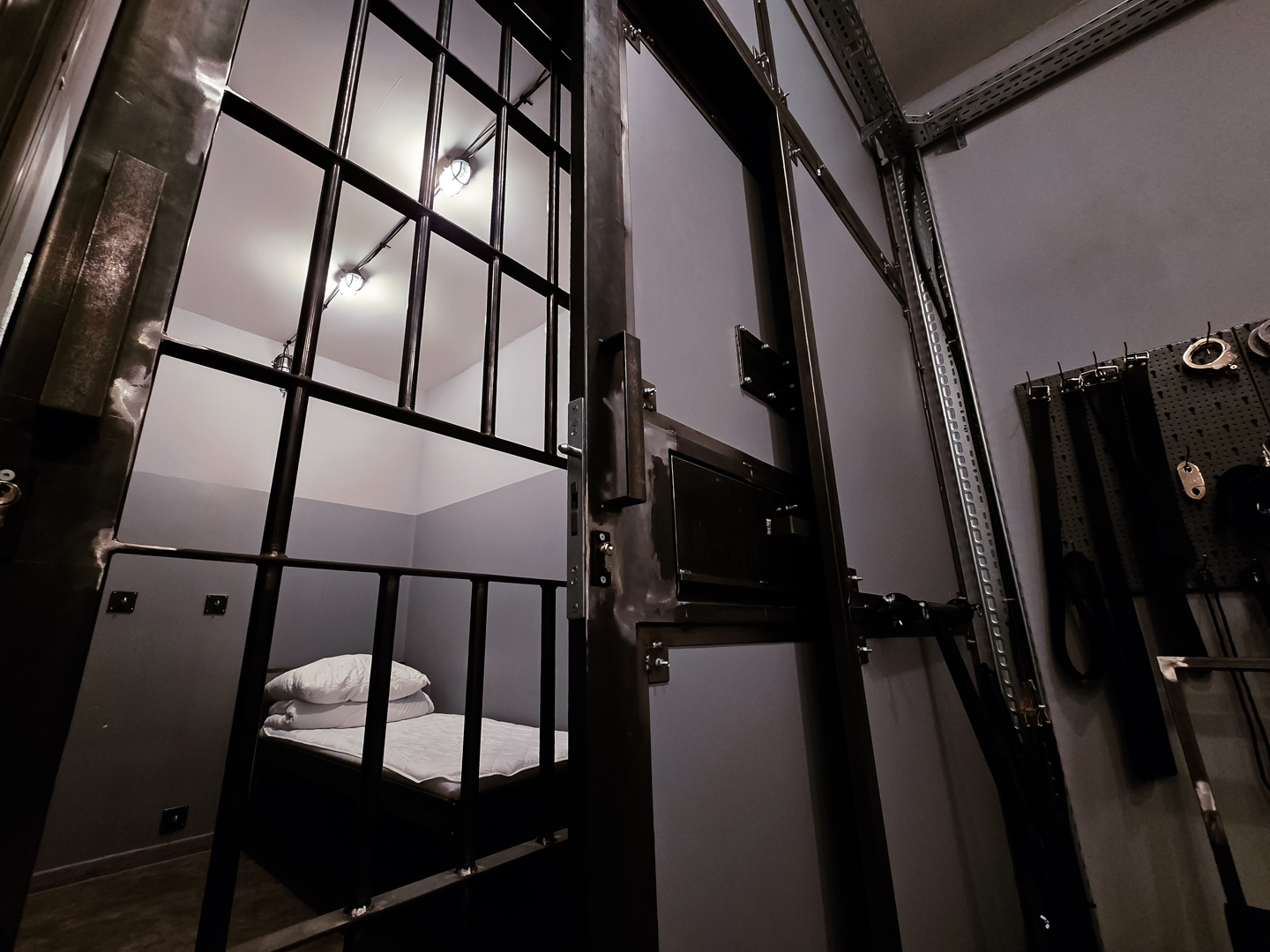Prisons have always been a fascinating yet dark chapter in human history, and Warsaw Prison is no exception. This infamous institution, located in the heart of Poland's capital city, has been a symbol of both justice and oppression over the years. From its early days to its modern role, the prison's walls have witnessed countless stories of crime, punishment, and redemption. If you're curious about the history, structure, and impact of Warsaw Prison, you've come to the right place. Let's dive in!
Warsaw Prison isn't just another detention facility; it's a place where history, politics, and human struggles intersect. Whether you're a history buff, a legal expert, or simply someone interested in the darker corners of society, this article will shed light on what makes Warsaw Prison such a significant institution. We'll explore its origins, its role during different eras, and how it has evolved to meet the demands of modern times.
But hey, before we jump into the nitty-gritty details, let me warn you—this isn't just a casual read. We're going deep. From its architectural design to its infamous inmates, we'll cover everything you need to know about Warsaw Prison. So, buckle up and let's uncover the mysteries behind these iron bars.
- Emilys Friends A Deep Dive Into Her Inner Circle And Their Impact
- Laci Peterson The Untold Story That Keeps Us Guessing
Table of Contents
- A Glimpse into the History of Warsaw Prison
- The Architectural Blueprint of Warsaw Prison
- Infamous Inmates: Who Were They?
- Reforms and Modernization Efforts
- Controversies Surrounding Warsaw Prison
- Life Inside Warsaw Prison: A Day in the Life
- Key Statistics and Data
- Human Rights Concerns
- The Future of Warsaw Prison
- Wrapping It Up
A Glimpse into the History of Warsaw Prison
Warsaw Prison has been around for a long time, and its story is as intriguing as the city itself. Established in the late 19th century, the prison was initially designed to handle the growing crime rates in Warsaw. Back then, it wasn't just a place to lock up criminals; it was also a symbol of power and control. The prison's early days were marked by harsh conditions and strict discipline, which often drew criticism from human rights activists.
During World War II, Warsaw Prison became a hub for political prisoners and resistance fighters. The Nazi regime used it as a detention center for those opposing their occupation of Poland. Many inmates were subjected to brutal treatment, and the prison became synonymous with oppression. Even after the war, the facility continued to play a significant role in Poland's justice system, albeit with some reforms aimed at improving conditions.
Warsaw Prison Through the Ages
As the years rolled by, Warsaw Prison adapted to changing times. In the post-war era, it underwent several renovations to accommodate the evolving needs of the penal system. The introduction of new technologies and updated policies helped transform it into a more modern facility. However, the legacy of its past still lingers, casting a shadow over its present-day operations.
- Don Johnson Melanie Griffith A Hollywood Love Story That Stood The Test Of Time
- Tips Drhomey Your Ultimate Guide To Smart Living Solutions
The Architectural Blueprint of Warsaw Prison
When you think about Warsaw Prison, one of the first things that comes to mind is its imposing architecture. Designed by renowned architects of the time, the structure was built to withstand the test of time. Its robust walls and intricate design were meant to deter escape attempts and ensure maximum security.
The prison's layout is a fascinating study in efficiency. Divided into several sections, each block serves a specific purpose. There are areas for solitary confinement, communal living spaces, and even recreational facilities for inmates. The design reflects a balance between security and functionality, making it one of the most well-planned prisons in Poland.
Modern Upgrades and Security Measures
Over the years, Warsaw Prison has undergone several upgrades to enhance its security features. Advanced surveillance systems, reinforced walls, and state-of-the-art monitoring equipment have been installed to prevent escapes and maintain order. These measures have significantly reduced the number of incidents within the facility, earning it a reputation for being one of the safest prisons in the country.
Infamous Inmates: Who Were They?
Warsaw Prison has housed some of the most notorious criminals in Polish history. From murderers and thieves to political dissidents and spies, the list of inmates reads like a who's who of crime. Some of these individuals have become legends in their own right, their stories immortalized in books and films.
- Jan Kozak: A notorious gang leader whose escapades made headlines across Poland.
- Anna Nowak: Known as the "Black Widow," she was convicted of poisoning several husbands.
- Marek Lewandowski: A spy accused of leaking classified information to foreign governments.
Stories Behind the Bars
Beyond the headlines, these inmates had complex backstories that often went unnoticed. Their motivations, struggles, and eventual fates paint a vivid picture of the human condition. Understanding their stories helps us grasp the broader implications of crime and punishment in society.
Reforms and Modernization Efforts
Recognizing the need for change, the Polish government has implemented several reforms aimed at improving conditions in Warsaw Prison. These efforts have focused on enhancing inmate rehabilitation programs, improving healthcare facilities, and promoting education within the prison walls. The goal is to transform the facility into a place where rehabilitation takes precedence over punishment.
One of the most significant reforms has been the introduction of vocational training programs. Inmates are now given the opportunity to learn new skills that can help them reintegrate into society upon release. This initiative has been praised by experts as a step in the right direction, offering hope to those who might otherwise be doomed to a life of crime.
Controversies Surrounding Warsaw Prison
No institution is without its controversies, and Warsaw Prison is no exception. Over the years, it has faced numerous allegations of human rights violations, corruption, and mismanagement. Critics argue that despite the reforms, the prison still falls short of international standards in several areas.
One of the most contentious issues is overcrowding. With more inmates than the facility was designed to accommodate, conditions have deteriorated in some parts of the prison. This has led to increased tensions and a rise in violence among inmates. Efforts to address these problems are ongoing, but progress has been slow.
Addressing the Challenges
Authorities have acknowledged the challenges facing Warsaw Prison and are working to implement solutions. This includes expanding the facility, hiring more staff, and investing in better infrastructure. While these measures won't solve all the problems overnight, they represent a commitment to improving the situation for both inmates and staff.
Life Inside Warsaw Prison: A Day in the Life
What's it like to live inside Warsaw Prison? For those unfamiliar with the daily routine, it might come as a surprise. Inmates follow a strict schedule that includes meals, exercise, and work assignments. Despite the harsh conditions, some have found ways to cope and even thrive within the confines of the prison walls.
Recreational activities play a crucial role in helping inmates pass the time. From sports to arts and crafts, there are plenty of opportunities for self-expression and personal growth. These activities not only provide a much-needed break from the monotony of prison life but also contribute to the rehabilitation process.
Building a Sense of Community
One of the most remarkable aspects of life inside Warsaw Prison is the sense of community that develops among inmates. Bonds are formed over shared experiences, and support networks emerge in unexpected ways. This camaraderie can be a powerful force for good, helping inmates stay positive and focused on their future.
Key Statistics and Data
Data can tell us a lot about the state of Warsaw Prison. According to recent reports, the facility houses over 1,000 inmates, with an average stay of three to five years. The majority of inmates are male, and the most common crimes committed include theft, drug offenses, and violent crimes.
Rehabilitation programs have shown promising results, with a significant percentage of participants successfully reintegrating into society. However, recidivism rates remain a concern, highlighting the need for continued investment in these initiatives.
Human Rights Concerns
Human rights organizations have long been vocal about the conditions in Warsaw Prison. While improvements have been made, there are still areas where the facility falls short. Issues such as overcrowding, inadequate healthcare, and lack of privacy continue to be points of contention.
Advocates argue that addressing these concerns is essential for ensuring that inmates are treated with dignity and respect. They emphasize the importance of creating an environment that fosters rehabilitation rather than punishment, aligning with international human rights standards.
The Future of Warsaw Prison
Looking ahead, the future of Warsaw Prison seems promising. With continued reforms and investments in infrastructure, the facility is poised to become a model for modern penitentiaries. The focus on rehabilitation and education will play a critical role in shaping its future, offering hope to both inmates and society at large.
As technology advances, there's potential for even greater improvements in security and efficiency. The integration of artificial intelligence and machine learning could revolutionize how prisons operate, making them safer and more effective. While these changes won't happen overnight, they represent a vision for the future that's worth striving for.
Wrapping It Up
In conclusion, Warsaw Prison is much more than just a place to house criminals. It's a complex institution with a rich history, fascinating stories, and a promising future. From its early days as a symbol of oppression to its modern role as a center for rehabilitation, the prison has evolved to meet the needs of an ever-changing world.
So, what's next? If you've enjoyed this deep dive into Warsaw Prison, why not share your thoughts in the comments below? Or better yet, explore our other articles to learn more about the fascinating world of criminal justice. Remember, knowledge is power, and understanding the complexities of our justice system is the first step toward creating a fairer and more just society.



Detail Author:
- Name : Kenneth Witting
- Username : slueilwitz
- Email : oleta75@okeefe.com
- Birthdate : 1993-11-13
- Address : 1128 Pasquale Turnpike Arelyview, AK 14180-9530
- Phone : 936-339-9047
- Company : Rippin, Graham and Gottlieb
- Job : Equal Opportunity Representative
- Bio : Nostrum adipisci id illo voluptatum exercitationem est. Fuga repudiandae repellendus nobis numquam aut at aut. Quo ea quod in sequi.
Socials
facebook:
- url : https://facebook.com/sauer1990
- username : sauer1990
- bio : Eos dignissimos omnis deleniti asperiores voluptas nihil.
- followers : 2471
- following : 2357
tiktok:
- url : https://tiktok.com/@aniyah.sauer
- username : aniyah.sauer
- bio : Et dolores dolorum quod.
- followers : 1555
- following : 406
instagram:
- url : https://instagram.com/aniyah.sauer
- username : aniyah.sauer
- bio : Eveniet distinctio aut in aperiam vero. Provident iste aut odit natus aliquam. Qui sed dolorem in.
- followers : 1701
- following : 1538
twitter:
- url : https://twitter.com/asauer
- username : asauer
- bio : Eum expedita fugiat voluptatem illum consequatur autem ipsum. Est consequatur odio odit dolores commodi.
- followers : 2750
- following : 2123
linkedin:
- url : https://linkedin.com/in/asauer
- username : asauer
- bio : Sunt qui ab quo delectus libero excepturi est.
- followers : 4567
- following : 188